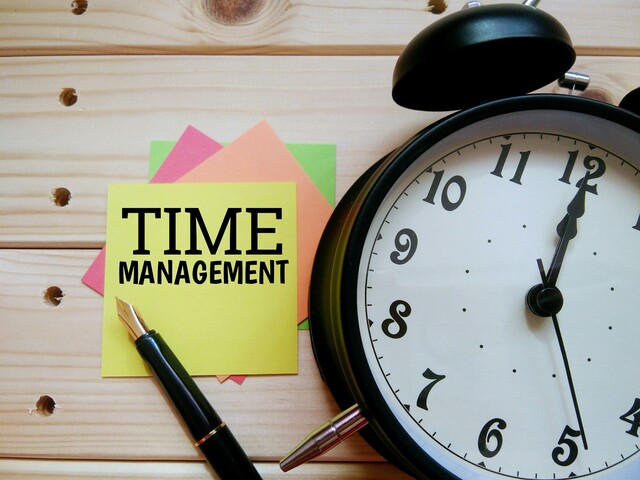-
encyclopedias;
-
almanacs;
-
atlases.
These reference materials are still readily available in a library, as well as through online libraries. In using these materials, you will continue to improve your research and allow your topic to have additional facts you might not be able to find elsewhere.
When you are researching any topic, an encyclopedia can be a strong starting point. These books are filled with basic information about a variety of topics, and the topics are all put together into one book.
The topics are arranged in alphabetical order, allowing you to easily find the main topic. Many encyclopedias also include pictures and charts, which help to create a stronger understanding for a reader.
Here are some easy strategies to use when researching with an encyclopedia:
- Determine a big topic for your research. Instead of picking a smaller detail on which to focus, find the bigger topic you want to study. For example, if you need to research the behaviors of cats, you would look up "cats" instead of the full question.
- Find the most current encyclopedia. Because information changes, it is best that you choose an encyclopedia that is current and contains information that is still relevant.
- Look in the table of contents or the index to find the page number of your topic.
- You also can look through an encyclopedia, as topics are arranged alphabetically.
- Read the section on the topic.
- Review the pictures and other information on the page.
- Look to see what other related topics might be covered in the encyclopedia. Many topics will have a list of related topics at the end of the entry.This will help you find even more information.
- Look at the encyclopedia bibliography for other resources to use.
Many encyclopedias are now available on CD-ROM and online. These are consistently updated, and they provide you with research no matter what time of day or night it is.
Libraries also have current copies of many encyclopedias, like the popular Encyclopedia Britannica.
Other possible ways to use an encyclopedia include:
- learning the overview of a larger topic;
- finding out more about a specific animal or plant;
- learning about a specific person from history.
With an encyclopedia, you will begin to understand the larger picture. This will inform you about your topic and allow you to see what questions have not been answered in your research yet.
With this knowledge in mind, you can begin to refine your search for additional information, using other sources of reference to continue your research.
Almanacs
When you have access to an encyclopedia, it can seem redundant to use an almanac as well. However, this yearly publication allows you to see up-to-date information and statistics on a variety of topics.
Some of the almanacs that are currently published include:
- Encyclopedia Britannica Almanac;
- Farmers' Almanac;
- The New York Times Almanac;
- Wall Street Journal Almanac;
- The World Almanac and Book of Facts.
While this is not a comprehensive list, it is a starting point when you want to seek out the information from an almanac. You will find these publications collect information from as far back as the 1800s.
Why use an almanac?
- To talk about the past: When you look at an almanac, such as the Farmer's Almanac, you will see that the weather from as far back as 1818 has been recorded. This allows you to use this research to talk about weather in your report or presentation. You can point out things that happened in the past to show how things have or have not changed.
- To show changes in time: Most of the time, an almanac is used to show just how much things have changed in the world. By looking at the numbers and facts from many centuries or decades before, you can show what technology has changed in society, for example, or how weather patterns have shifted.
- To create relevance: When you need to talk about certain events in modern times, you can use the facts in an almanac to show why this event, or at least talking about it, is still relevant.
- To present quirky facts: Many almanacs will also state strange facts or little known pieces of history to the readers. Starting with this sort of factoid in a research paper or a speech can help to draw in the interest of the audience.
- To learn about cycles: If you take the time to look at each of the different almanacs created in each year, you can begin to notice trends and cycles. This allows you to create a strong hypothesis that is supported by facts.
- To be able to specify dates of events: If you are researching a specific event in history, an almanac will allow you to have an understanding of what was happening in the world during that date. This can add creativity to a report or presentation.
- To gain more directions for your research: In learning about the weather in a certain region and the advice that was given during that time, you can begin to find new avenues for your research. Almanacs often can cause you to look up additional facts you might not have thought to consider before looking at this reference tool.
Many almanacs are available on the Internet as well, to help you learn more about not only the facts they contain but the people who compiled those facts.
For example, if you were to talk about a certain country or population, finding a local almanac could give your research insight into the way things really were, as opposed to how they have been written about in other research sources.
Atlases
When your research is focused on a particular place or a particular region, it can help to seek out an atlas. This resource allows you to see where a particular point is in the world, what it rests in relation to, and how it might have changed over time.
For example, the borders of many countries have changed, along with many country names. By using an atlas, you can see just where these changes took place and how the country may have been affected by the changes.
Some of the most commonly used atlases are:
- Rand McNally Road Atlas;
- Atlas of the World: 17th Edition;
- New Concise World Atlas.
The atlases that you can purchase in book form or review at your local library are designed to be laid flat on a table and viewed in that way.
As this might not be convenient for everyone, you might also use atlases that are available online. Google Maps is one example of an online atlas that points out not only the borders of countries and geographic features but specific locations and roads.
Some of the information you can find on an atlas includes:
- borders;
- country names;
- city names;
- popular location names;
- geographic features;
- topographic information;
- population counts;
- climate;
- agriculture;
- vegetation;
- water resources;
- aquatic life;
- religions;
- natural resources;
- earth movement, such as faults;
- volcanoes;
- politics;
- earthquakes.
Many atlases are specialized, so you might find an atlas that focuses on certain features that you need in your research. For example, when you need to talk about the terrain of a region, you will want to find an atlas that speaks to the features.
It might be helpful to go to a library to review available atlases in person before you decide to buy an atlas for yourself. In addition, you might find that the online atlases might be more reliable, as they are updated more frequently and they can be manipulated more easily than a paper map.
Some ways you can use an atlas include:
- Review the key/legend before you begin. Because every atlas and page might have a slightly different style, you will want to review the scale and other key points to see what different colors, lines, etc., will mean on the atlas page.
- Note specific points. You can use an atlas to find a certain point for your research. If you already know of a city you need to research, it can help to find it on a map to see where it is located in relation to yourself.
- Measure latitude and longitude. When you need to have more specific coordinates for research, you can establish latitude and longitude with your atlas; or you can have latitude and longitude coordinates and then determine what city or location is that point.
- Compare old atlases with new versions. If you have to speak to history or development, it can help to review different atlases and their information between specific time periods. This can help you see the changes that have taken place and then research why these changes happened, why they were important, etc.
- Look at different features between different regions.
- Find locations alphabetically. Most atlases are arranged in alphabetical order, with entries beginning with the letter "A" starting off the book and words starting with "Z" at the end. You can find atlases that cover a specific area, or you can find atlases that cover larger geographical regions, depending on your needs.
- Move from one location to another. You can use an atlas to figure out how to get from one point to another. For example, when discussing a new concept for your business with an investor, you might talk about how a delivery would move from the warehouse to the customer. Showing this information shows that you have thought the research through at even the most basic level.
- Determine distance. If you need to know how far the distance is between two points, using an atlas can help. While there are online tools that might be more precise, it is a good idea to think about how you might measure the distance on your own.
Atlases often are forgotten with the advent of online mapping and Global Positioning System technology, but many explorers have developed and used them, and you too can use them in your research.

























